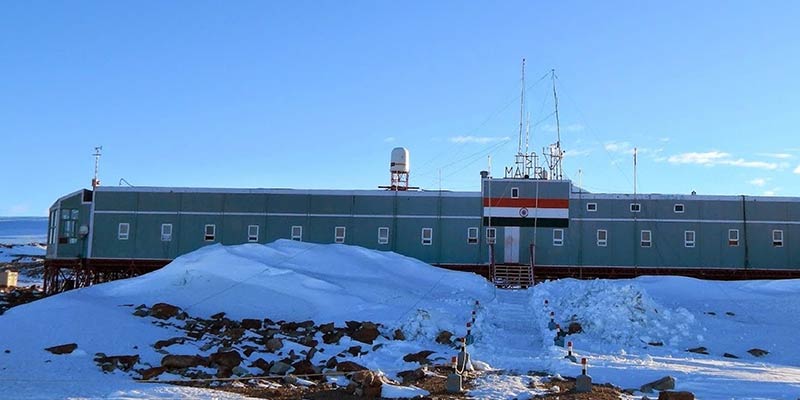- India
- Mar 17
- Mathew Gregory
India’s collaborative research programmes in Antarctica
• India collaborates with Norway and Japan in Antarctic Research.
• A major Indo-Norweigian collaborative field campaign, near Indian Maitri station, was undertaken during 2016–2019 to understand the ice shelf dynamics, mass balance and reconstruct past changes in atmospheric and sea ice dynamics under the joint project “Mass balance, dynamics, and climate of the central Dronning Maud Land coast, East Antarctica (MADICE)”.
• Under this project, geophysical field measurements, ice core drilling, snow core drilling, ice-sheet modelling and satellite remote sensing-based studies were conducted to understand the future Antarctic contribution to the global sea-level rise.
• An Indo-Japanese project “Schirmacher Oasis Nippon (Japan) India Coring (SONIC)” was initiated during 2019 to reconstruct the past-climate.
• 15 sediment cores, ranging from 1 m to 8 m, were retrieved from various lakes of Schirmacher Oasis by the team for analysis.
• Five scientists from National Centre for Polar and Ocean Research (NCPOR), Goa have participated in the Indo-Norwegian project and two scientists from NCPOR and one scientist from the Manipal University are involved in the Indo-Japanese collaborative project.
India & Antarctica
• The importance of Antarctica as a pedestal for front-ranking scientific research was recognized by Indian way back in 1981 itself, when the first Indian Scientific Expedition to Antarctica was launched.
• Since then, India has made great strides in initiating scientific projects of both national and global relevance as well as in catering to the entire gamut of complex logistics operations called for, in the Annual Expeditions to Antarctica.
• Experiments mounted by Indian scientists in such disciplines as atmospheric sciences & meteorology, earth sciences and glaciology, biology and environmental sciences have also contributed directly to global experiments mounted under the aegis of the Scientific Committee on Antarctic Research (SCAR).
• The Indian research station Maitri has also served as a platform for collaborative studies with some Antarctic Treaty nations i.e. Germany, Italy, France, Poland and the United States of America.
• It has also facilitated scientists from Malaysia, Columbia, Peru and Mauritius to work in Antarctica.
Accomplishments of Indian Scientific community in Antarctica
1. Identification of a number of new species of bacteria from the cold habitats of Antarctica- 30 out of 240 new species discovered so far have been by Indian scientists.
2. Identification of new genes from the bacteria as genes required for the survival of bacteria at low temperature.
3. Identification of a number of lipases and proteases active at low temperatures and useful for the biotechnology industry.
4. Preparation of comprehensive geological and geomorphological maps of the Schirmacher Oasis.
5. Studies of cold adaptability of human beings in the harsh environment of Antarctica which have provided significant baseline data for use in similar studies on India’s armed forces serving in the Himalaya.
Objectives of Indian expeditions
1. Continuation of the scientific programs in Antarctica in the fields of atmospheric sciences, climate change, geoscience and glaciology, human physiology and medicine, polar biology and environmental science.
2. Initiating novel programmes in the frontier realms of polar science, viz. Assessment of microbial diversity in Arctic and Antarctic: Past and Present; Environmental monitoring and health of the Indian Antarctic Stations in pursuit of Antarctica-Treaty-System and its governance; Long-term monitoring and modeling of precipitation over Antarctica; and Satellite-based monitoring Antarctic sea ice and land ice topography, with special focus on glaciers.
3. Ensuring a prominent and sustained presence of India in the Antarctica through initiation of scientific research in some of the frontier realms of polar science including paleo-climate reconstruction from the Antarctic coastal water.
4. Continue to play a lead role amongst the nations with a sustained presence in Antarctica.
(The author is a trainer for Civil Services aspirants. The views expressed here are personal.)

